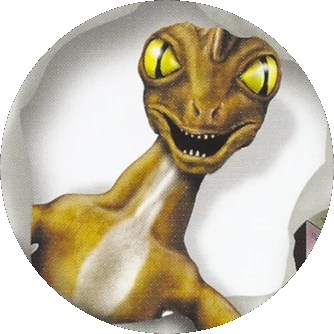When more than 20 million driver ants get together, bad things can happen. These ants form the world's largest colonies, and they swarm across the African landscape, cutting a path of death and destruction. Driver ants don't stay in one place too long; once the ants have eaten everything in sight, they move again to find new hunting grounds.
Unstoppable: Driver ants hunt in massive groups that look like a flowing black river; the swarms can measure up to 45 feet wide and several feet long. Made up of soldiers and workers, these deadly fronts can advance at one foot per minute through the forest.
Big Heads! Most driver ants don't have eyes and instead rely on their antennae to smell and feel their way around. Soldiers of these species have extra wide heads and jaws that crush prey.
Death March[]

A group of driver ants can shred an insect grub to pieces in minutes.
When driver ants march out on the hunt, other animals run for cover-even elephants try to steer clear of these hordes. Soldiers scout ahead of the swarm to attack anything that might pose a threat, while the workers drive forward, destroying any creatures that get in their way, from spiders and worms to chickens and monkeys. When the ants are done hunting, little is left alive-these tiny predators have been known to kill 100,000 victims in one day.
Deep Down: These insects have the largest colonies in the ant world, with each one consisting of up to 22 million members. To house all these ants, the creatures dig nests up to 13 feet deep into the soil.
Moving Day: Though driver ant nests are huge, the insects rarely stay in one place long. Every few months, usually when they've eaten all the prey in an area, the ants in a colony swarm out and travel for days to find a new home..
Black Death[]
When it's time for the daily hunt, thousands of driver ants stream out of the nest, with soldiers on the sides and workers in the middle. Some ants occasionally branch off from the mass when they sense nearby prey, and make short work of large insects, such as grasshoppers. The victims are chewed up and brought back to the nest in tiny pieces.

